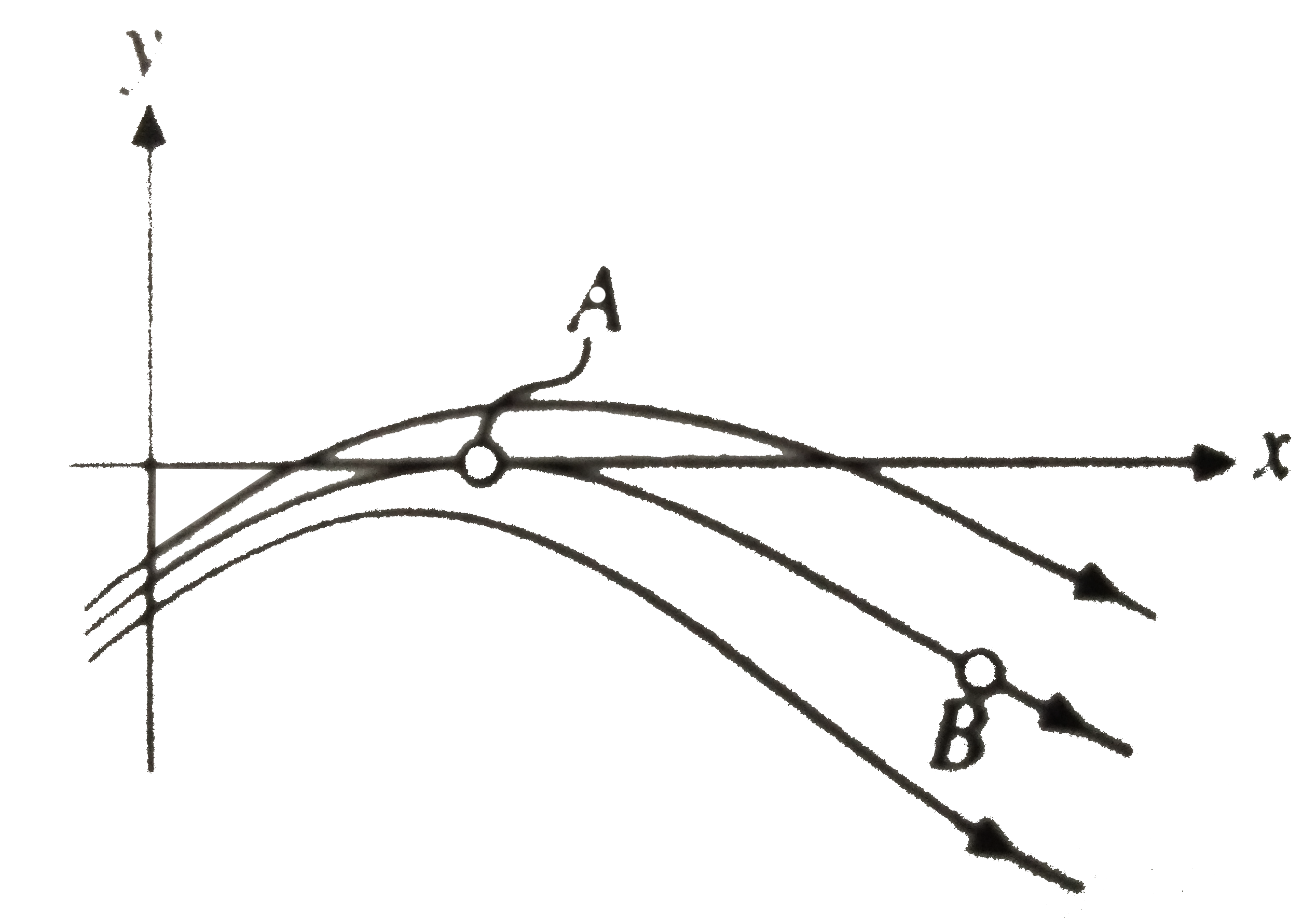(a) Consider an arbitary electrostatic field configuration. A small test charge is placed at a null point (i.e, where →E=0) of the configuration. Show that the equillibrium of the test charge is necessarlly unsutable.
(b) Verify this result for the simple configuration of two charges of the same magnitude and sign placed a certain distance apart.
(a) To prove this, suppose the equilibrium of test charge is stabel. When the test charge is displaced from the null point in any direction, it must experience a restoring force towards the null point. This indicates that there is net inward flux of electric field through a closed surface around the null point. But, according to Gauss's law, the electric flux through a surface not enclosing any charge must be zero. Hence the equllibrium cannot be stable.
(b) The middle point of the line joining two like charges is a null point. When we displace a test charge slightly along the line, a restoring force tends to bring the test charge back to the center. But when we displace the test charge normal to the line, the net force on the test charge takes it further it further away from the null point. Hence the equilibrium cannot be stable.
Similar Questions
Consider an arbitrary electrostatic field configuration. A small test total is placed at a null point (i.e, where →E=0 ) of the configuration. Show that the equilibrium of the test charge is necessarily unstable.
(b) Verify this result for the simple configuration of two charges of the same magnitude and sign placed a certain distance apart.
View SolutionA small test charge is released at rest at a point in an electrostatic field configuration. Will it travel along the field line passing through that point ?
View Solution
Knowledge Check
Two positive point charges of unequal magnitude are placed at a certain distance apart. A small positive test charge is placed at null point, then
AThe test charge is in unstable equilibriumBThe test charge is in stable equilibriumCThe test charge is in neutral equilibriumDThe test charge is not in equilibriumA positive charge q0 placed at a point P near a charged of metal sphere experience a force of repulsion of magnitude F, the electric field E of the charge metal, charge at P is
AFq0B<Fq0C>Fq0DFTwo charges e and 3e are placed at a distance r. The distance of the point where the electric field intensity will be zero is
Ar(1+√3) from 3e chargeBr(1+√3) from e chargeCr(1−√3) from 3e chargeDr1+√13 from e charge
Fig. shows three electric field lines.
(a) What is the direction of the electrostatic force on a positive test charge placed at points A and B ?
(b) At which point A or B, will the acceleration of the test charge be greater if the charge is released?
 .
.
View SolutionThe electric field due to a point charge at a distance R from it is E. If the same charge is placed on a metallic sphere of radius R, the electric field on the surface of the sphere will be nE, then the value of n is
View SolutionTwo charges of 9 and 16 μC are placed 0.7 m apart. Find the position of the null point (A point where the net field is zero) on the line joining the two charges.
View SolutionThe electric field due to point charged at a distance R form it is E. if the same charge is placed on a metallic sphere of Radius R, the electric field on the surface of the sphere will be
View SolutionTwo charge 9e and 3e are placed at a distance r. The distance of the point where the electric field intensity will be zero is :
View Solution

